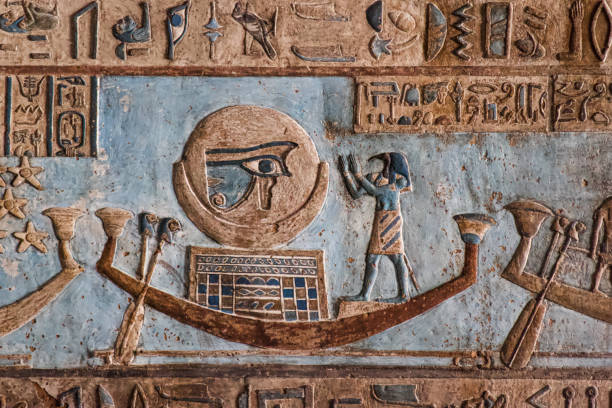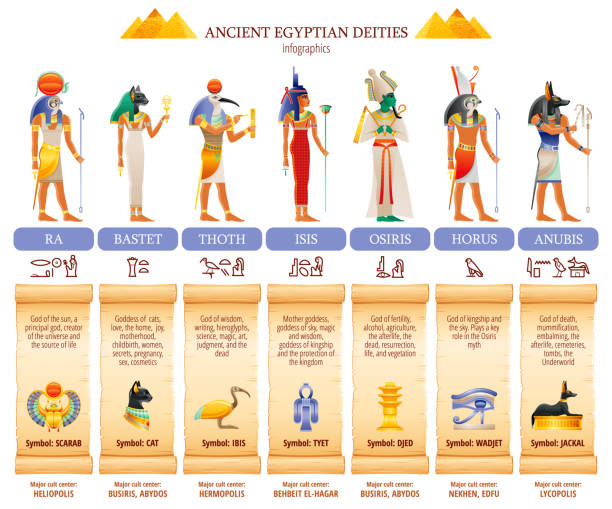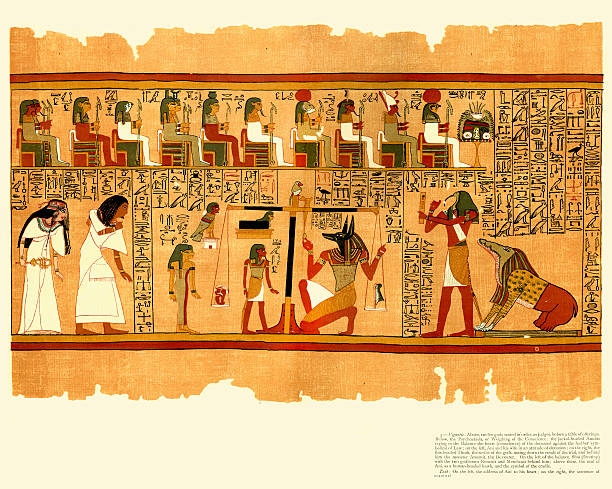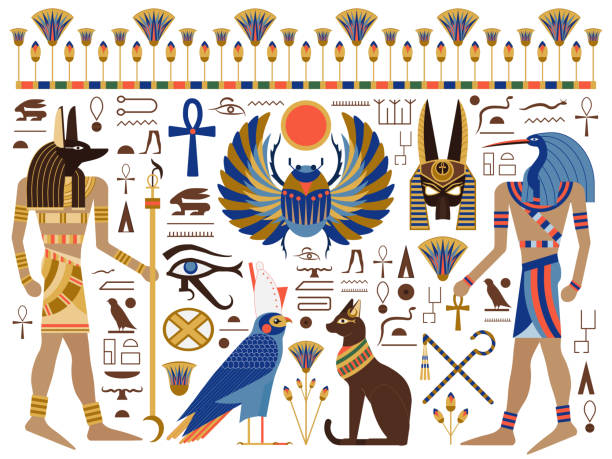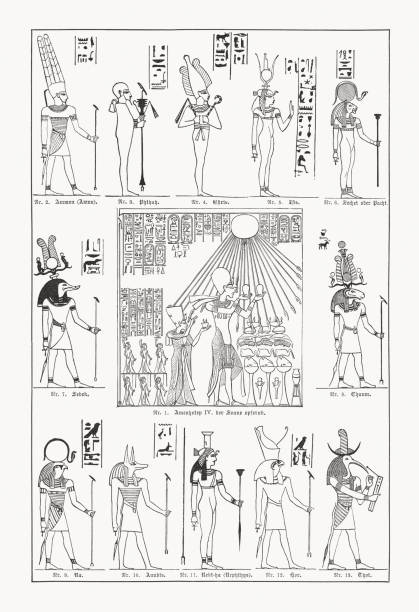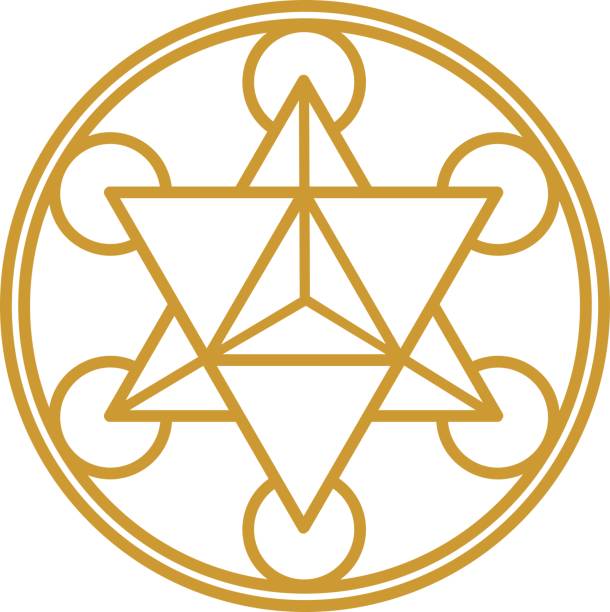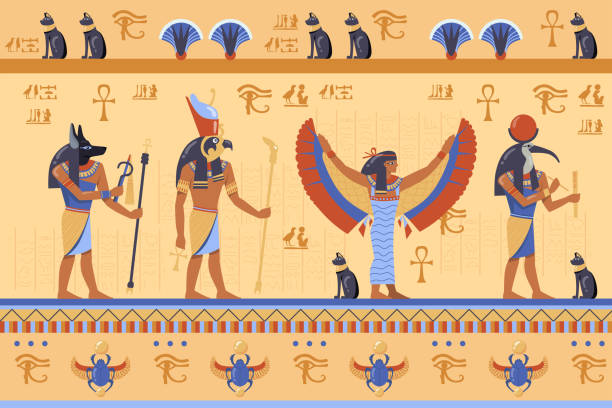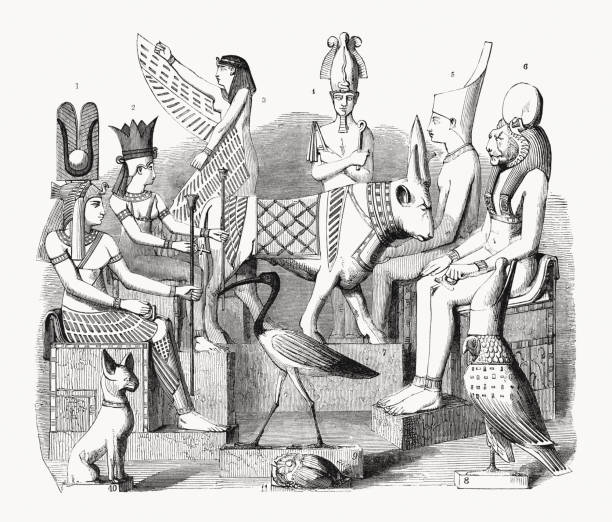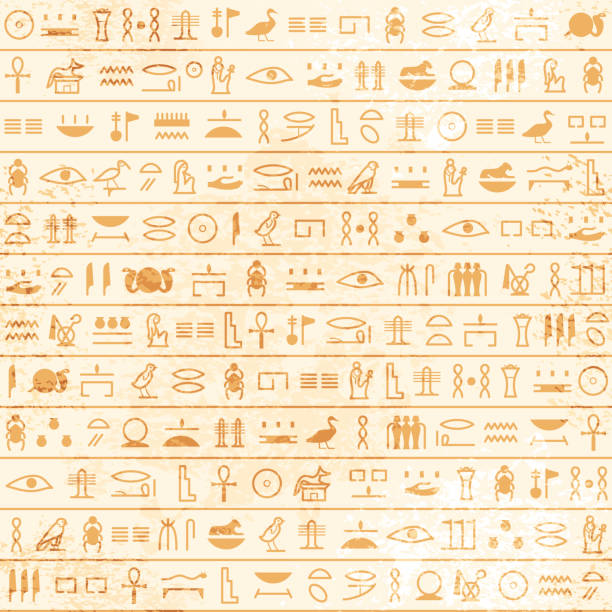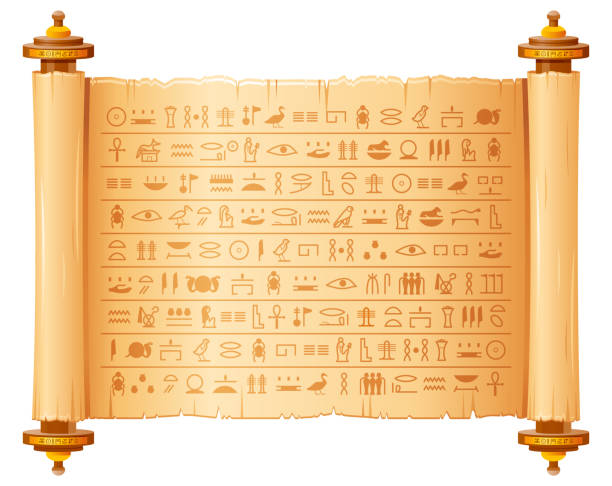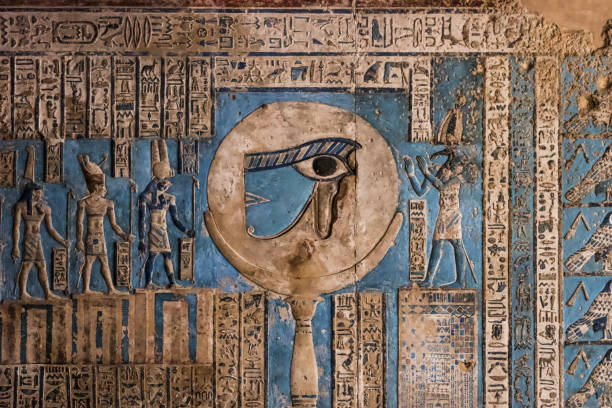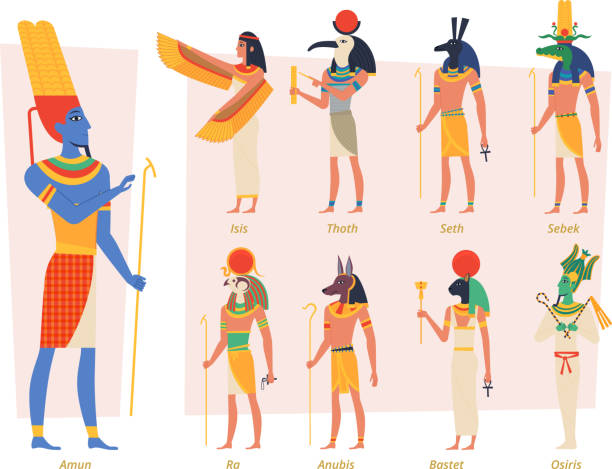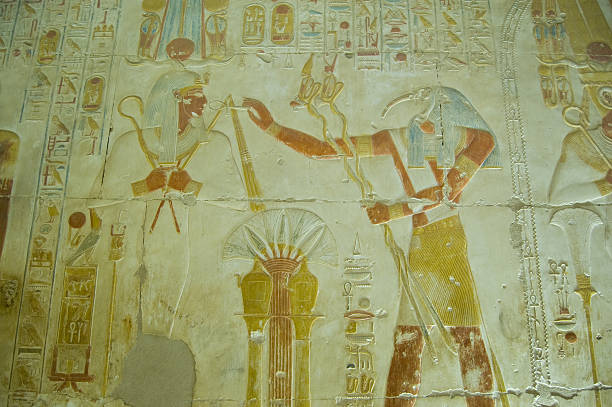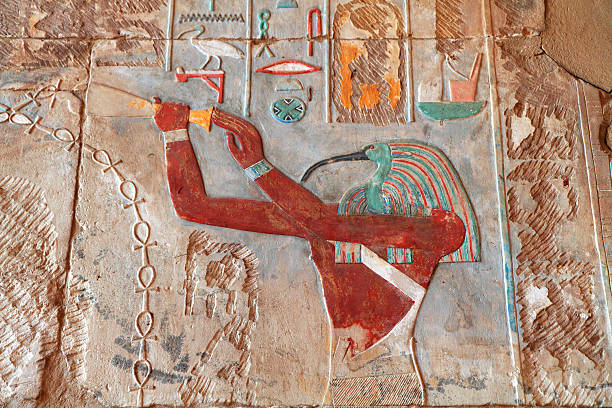
"A painted bas relief of the ibis-headed god Thoth from the area known as Hatshepsutaas Wall in the Great Temple of Amun, Karnak, Egypt. Thoth pours the ankh, symbol of life, over the 15th century BC queen Hatshepsut (also Maatkare), the only woman ever to rule as pharaoh. The figure as Hatshepsut was defaced as part of efforts by her stepson and successor Tuthmosis III (or Thutmose III or Menkheperre) to remove symbols of her reign. Covering an area of 100 hectares, Karnak is the largest temple complex ever built."

